
Developer vs Tester: Roles, Collaboration, and Impact on Software
Oct 23, 2024 6 Min Read 7114 Views
(Last Updated)
In the world of making computer programs and apps, there are two important jobs: developers and testers. Developers are the builders; they create the code that makes everything work. Testers are detectives; they carefully check the code to make sure it’s good and works well. But even though developers and testers seem different, they actually need each other to make things right. They work together like puzzle pieces to create amazing software.
This blog is all about understanding the difference between developers vs. testers. We’ll talk about how they can help each other, even if their jobs seem different. We’ll look at the problems they face, the tools they use, and how they can make things better together.
The goal is to show how important it is for developers and testers to get along and work as a team. When they understand each other and work together, they can make fantastic software that people love to use.
Table of contents
- Developer vs Tester: Roles and Responsibilities
- A. Developer's Role
- B. Tester's Role
- Developer vs Tester: Collaboration and Communication
- Agile and DevOps Methodologies for Collaboration
- Communication Channels and Tools for Effective Collaboration
- Developer vs Tester: Misconceptions and Challenges
- A. Common Misconceptions About Each Other's Roles
- B. Challenges Faced in Collaboration
- C. Overcoming Misunderstandings and Conflict
- Developer vs Tester: Benefits of a Strong Developer-Tester Relationship
- Improved Software Quality
- Faster Bug Detection and Resolution
- Enhanced User Experience
- Increased Productivity and Efficiency
- Developer vs Tester: Best Practices for Effective Collaboration
- Developer vs Tester: Tools and Technologies
- A. Testing Tools for Testers
- B. Development Tools for Developers
- C. Collaborative Platforms for Joint Work
- Developer vs Tester: Future Trends and Evolution of Roles
- Impact of AI and Automation in Testing and Development
- Changing Dynamics in Software Development Teams
- Emerging Roles and Responsibilities
- Developer vs Tester: Conclusion
- FAQs
- What's the main difference between a Developer and a Tester in software development?
- How do Developers and Testers collaborate in making software?
- What challenges do Developers and Testers face in their roles?
Developer vs Tester: Roles and Responsibilities
The roles and responsibilities of developers and testers are as follows:
A. Developer’s Role
Writing Code: Developers are responsible for writing the code that forms the basis of software and applications. This involves using programming languages such as Python, Java, or JavaScript to create the functional elements of a program.
Creating Software Solutions: They create solutions or applications by translating user requirements into functional software. This includes designing, building, and maintaining the software.
Debugging and Troubleshooting: Developers identify and fix issues within the code. They debug and troubleshoot problems to ensure the software works as intended.
Ensuring Functionality: Their primary goal is to ensure that the software functions correctly. They make sure that every feature works as expected and delivers the intended results.
Also Read: 7 Powerful Steps to Land a Software Developer Internship
B. Tester’s Role
Testing Software: Testers rigorously evaluate the software by applying different testing methodologies like functional testing, regression testing, and performance testing to ensure the software works properly.
Identifying Bugs and Issues: Testers locate and report any bugs, errors, or issues present in the software. They aim to find problems that could disrupt the user experience.
Quality Assurance: They are responsible for ensuring the quality and reliability of the software. Quality assurance involves maintaining certain standards and ensuring the software meets those benchmarks.
Ensuring Usability and User Experience: Testers check how easy it is for people to use the software. They make sure it is user-friendly and delivers a good experience for the end-users.
Understanding the distinct roles of developers and testers in the software development process is crucial for ensuring the creation of high-quality software that meets the needs of its users. The collaboration and synergy between these roles are fundamental in delivering efficient and reliable software.
Before diving into the next section, ensure you’re solid on full-stack development essentials like front-end frameworks, back-end technologies, and database management. If you are looking for a detailed Full Stack Development career program, you can join GUVI’s Full Stack Development Course with placement assistance. You will be able to master the MERN stack (MongoDB, Express.js, React, Node.js) and build real-life projects.
Additionally, if you would like to explore JavaScript through a Self-paced course, try GUVI’s JavaScript certification course.
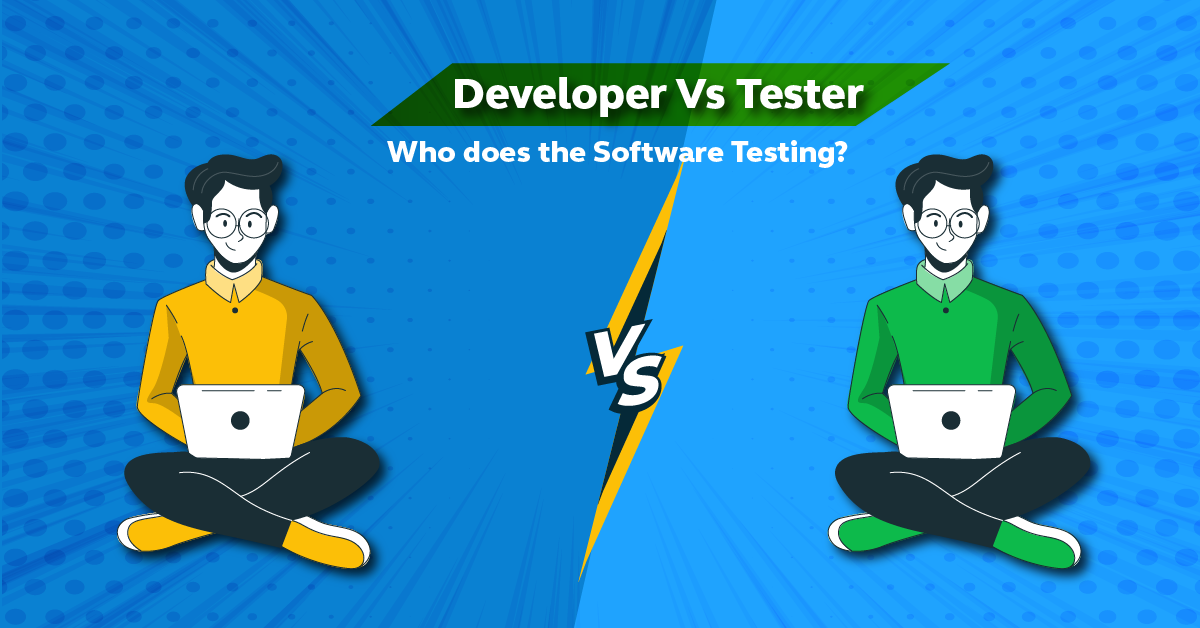
Developer vs Tester: Collaboration and Communication
The collaboration and communication aspects between developers and testers are as follows:
Collaboration between developers and testers is critical in producing high-quality software. When these two teams work together, they can identify and solve issues more effectively. Collaborative efforts help in catching and resolving problems earlier in the development process, leading to better software quality.
Agile and DevOps Methodologies for Collaboration
Agile Methodology: Agile encourages close collaboration between development and testing teams. It focuses on iterative development, where both developers and testers work together in short cycles, allowing for quicker feedback and issue resolution.
DevOps: DevOps emphasizes collaboration and communication between software development and IT operations. It involves the integration of both development and operations to streamline the software delivery process.
Communication Channels and Tools for Effective Collaboration
Communication Channels: Various channels such as in-person meetings, messaging platforms like Slack or Microsoft Teams, and video conferencing tools aid in effective communication between developers and testers.
Collaboration Tools: Tools like Jira, Trello, or Asana allow developers and testers to manage tasks, share progress, and assign responsibilities in a transparent and organized way.
Version Control Systems: Platforms like Git or SVN assist in managing changes to the code and allow teams to collaborate effectively without conflicts.
Also Read: The Top 10 Tools Every Full-Stack Developer Should Master in 2023
The use of effective methodologies and tools for collaboration and communication is essential in the software development process. It fosters a harmonious working environment, ensuring that both developers and testers work seamlessly together towards the common goal of producing high-quality software products.
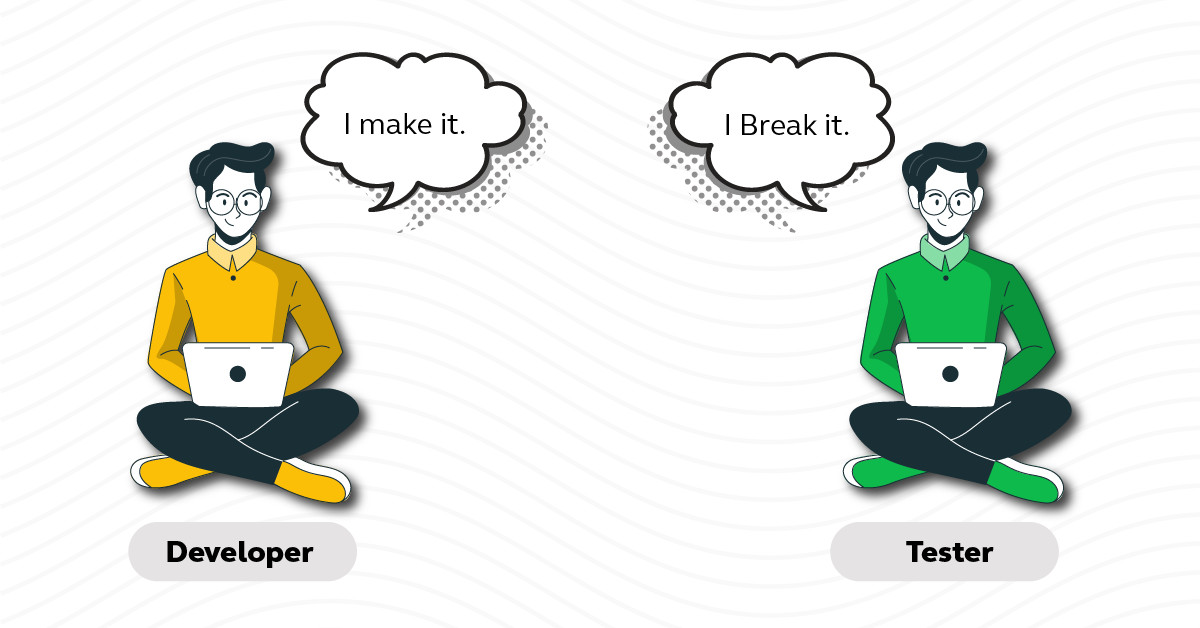
Developer vs Tester: Misconceptions and Challenges
The challenges and common misconceptions between developers and testers are as follows:
A. Common Misconceptions About Each Other’s Roles
Developers’ Misconceptions:-
- Testing is easy: Developers might think that testing is a straightforward task and overlook its complexities.
- Testing is not creative: Some developers might believe that testing doesn’t require creativity or critical thinking.
Testers’ Misconceptions:-
- Developers overlook quality: Testers might assume that developers prioritize finishing tasks over ensuring software quality.
- Developers don’t understand testing: Testers may think that developers don’t appreciate or understand the complexities of testing.
Also Read: Difference Between Software Developer vs Full Stack Developer
B. Challenges Faced in Collaboration
Communication Gaps: Differences in terminology and a lack of effective communication can lead to misunderstandings between developers and testers.
Time Constraints: Often, there are tight schedules for software development, leading to less time for thorough testing and feedback.
Differing Perspectives: Developers may focus on functionality, while testers concentrate on potential issues, leading to conflicting viewpoints.
Tool Incompatibility: Different tools used by developers and testers can cause compatibility issues and hinder collaboration.
C. Overcoming Misunderstandings and Conflict
Improved Communication: Encouraging open and clear communication between developers and testers helps in aligning their perspectives and understanding.
Early Involvement: Involving testers in the early stages of development helps address potential issues before they become more complicated.
Cross-training and Workshops: Providing opportunities for developers to understand testing and for testers to comprehend development can bridge the understanding gap.
Collaborative Tools: Using common tools for both development and testing promotes shared understanding and teamwork.
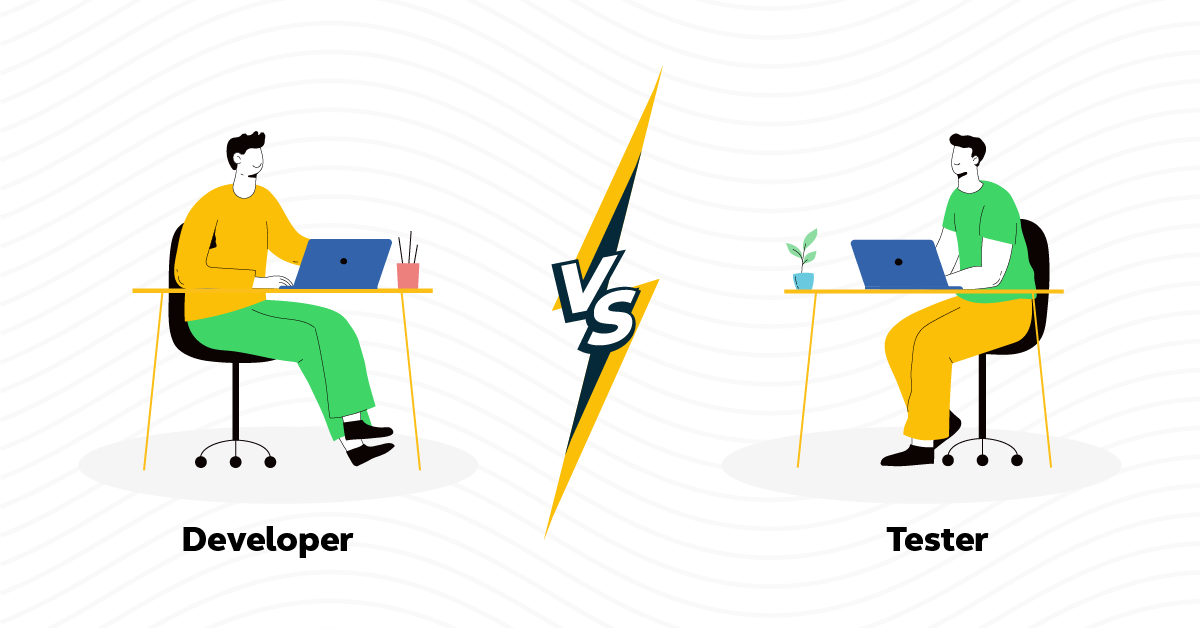
Developer vs Tester: Benefits of a Strong Developer-Tester Relationship
Here are the benefits of a strong developer-tester relationship:
Improved Software Quality
When developers and testers collaborate effectively, they can ensure better software quality by catching and fixing issues before the software reaches users.
Faster Bug Detection and Resolution
A strong relationship between developers and testers results in quicker identification and resolution of bugs or issues, reducing the time between finding a problem and fixing it.
Enhanced User Experience
Collaborative efforts between developers and testers lead to software that is more user-friendly and provides a better experience for those who use it.
Increased Productivity and Efficiency
A strong developer-tester relationship enhances the overall productivity and efficiency of the software development process, ensuring smoother and quicker delivery.
Also Read: The 8 Essential Skills for a Successful Automation Tester
When developers and testers work together cohesively, they contribute to improved software quality, faster issue resolution, a better user experience, and increased efficiency in the software development lifecycle. These benefits not only improve the final product but also streamline the entire development process, ensuring a more effective and satisfying outcome for all stakeholders involved.
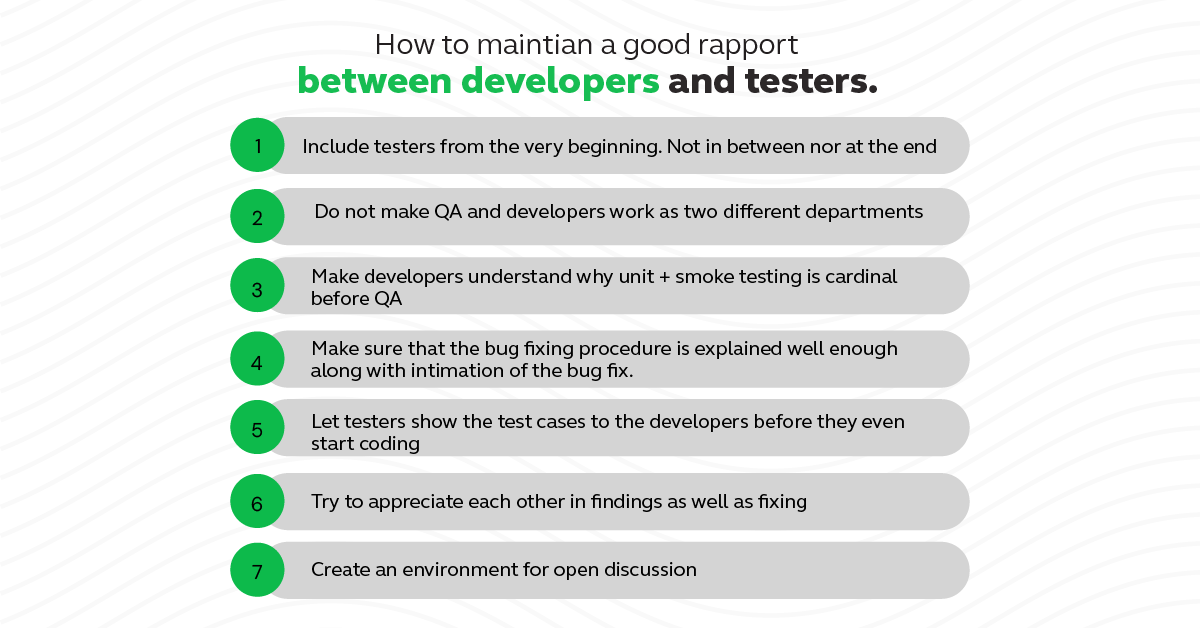
Developer vs Tester: Best Practices for Effective Collaboration
Here are best practices for effective collaboration between developers and testers, along with related links for further understanding:
A. Early Involvement and Continuous Feedback: Involving testers from the project’s early stages helps identify potential issues and allows for continuous feedback, leading to better collaboration and a higher-quality end product.
B. Mutual Understanding of Each Other’s Roles: Developers and testers should gain insights into each other’s roles, challenges, and priorities to create a more cohesive and effective team.
C. Implementing Automation and Testing Strategies: Using automation tools for testing streamlines the process and allows developers and testers to focus on complex and critical areas, enhancing efficiency and reducing manual errors.
D. Regular Team Meetings and Knowledge Sharing: Holding regular team meetings and fostering a culture of knowledge sharing helps keep everyone aligned, discussing challenges, and enhancing collaboration.
By following these best practices, developers and testers can enhance their collaboration, efficiency, and the overall quality of the software development process. These strategies promote a more cohesive working environment and ensure that the end product meets higher standards while streamlining the entire development cycle.
Also Explore: Major Roles And Responsibilities of a Web Developer in 2024
Developer vs Tester: Tools and Technologies
Here are tools and technologies for testers, developers, and collaborative platforms:
A. Testing Tools for Testers
Selenium: A widely used tool for automating web browsers, allowing testers to automate web application testing across various browsers.
Jenkins: An open-source automation server used for continuous integration and continuous delivery, allowing testers to automate various testing processes.
Postman: A comprehensive API testing tool that enables testers to test, develop, and document APIs quickly.
B. Development Tools for Developers
Visual Studio Code: A highly popular code editor with various features like debugging, syntax highlighting, and Git integration.
GitHub: A version control system for tracking changes in code and collaborating with other developers.
Docker: Enables developers to develop, ship, and run applications in containers.
C. Collaborative Platforms for Joint Work
Jira: Allows teams to plan, track, and manage agile software development and testing processes in one platform.
Slack: A messaging platform for teams, facilitating communication, sharing files, and integrating with various tools.
Microsoft Teams: Provides chat, calls, and collaboration tools for team communication and project management.
By utilizing these tools and platforms, testers, developers, and teams can streamline their processes, enhance collaboration, and efficiently manage their respective tasks within the software development lifecycle.
Also Read: Top 7 Back-End Developer Skills You Should Know
Developer vs Tester: Future Trends and Evolution of Roles
Here are the future trends and the evolving landscape of roles in software development:
Impact of AI and Automation in Testing and Development
AI in Testing: Artificial intelligence is increasingly used for tasks such as test case generation, predictive analytics, and autonomous testing, improving accuracy and efficiency.
Automation in Development: Automation tools in development streamline repetitive tasks, enhancing productivity and allowing developers to focus on more complex aspects of coding.
Changing Dynamics in Software Development Teams
Remote Collaboration: Increased remote work has necessitated stronger virtual collaboration tools and methodologies, altering the way software development teams operate.
Diversity and Multidisciplinary Teams: Teams are becoming more diverse, incorporating varied skills and backgrounds, leading to more innovation and creative problem-solving.
Emerging Roles and Responsibilities
AI Ethics Specialists: With increased AI integration, new roles focusing on ethical and responsible AI development and usage are emerging.
DevSecOps Specialists: Integration of security into DevOps practices is creating roles focused on security within the software development lifecycle.
The integration of AI, changing team dynamics, and the emergence of new roles are reshaping the landscape of software development. Understanding and adapting to these changes will be crucial for staying competitive and ensuring the delivery of high-quality software in the future.
Level up your coding skills with our comprehensive GUVI’s certified Full Stack Development Course with placement assistance where you will master the MERN stack (MongoDB, Express.js, React, Node.js) and build interesting real-life projects. This program is crafted by our team of experts to help you upskill and assist you in placements. Alternatively, if you want to explore JavaScript through a self-paced course, try GUVI’s JavaScript course. Enroll now for a deeper understanding of front-end and back-end development to kickstart your career in tech.
Developer vs Tester: Conclusion
It’s super important for developers and testers to work as a team. When they team up, they catch problems early and make the program better before it’s used by everyone. In the future, developers and testers will keep working together in new ways. They’ll use more cool technology and find even better ways to make software.
Working from different places and having diverse teams will change how they collaborate. To make awesome software, it’s important for developers and testers to understand each other and work together nicely.
They should keep learning new technologies and using new tools to make even better software for everyone to enjoy. Looking to the future, they’ll keep finding better ways to work together. Building good relationships and using new tools will make software even better for everyone to use.
Must Read: 60 Web Developer Interview Questions And Answers
FAQs
What’s the main difference between a Developer and a Tester in software development?
Developers write the code that forms software, making it work. They build applications, websites, and programs. Testers, on the other hand, examine the software to find mistakes and ensure it works well before people use it. While developers create the software, testers make sure it’s of good quality.
How do Developers and Testers collaborate in making software?
Yes, they collaborate! Developers create the software, and testers check it for mistakes. By working together, they find and fix issues early, making the software better before it’s available to users. This teamwork helps catch problems and ensures the software is great for everyone who uses it.
What challenges do Developers and Testers face in their roles?
Developers might face challenges in creating complex features, while Testers struggle with finding and reporting all the issues in the software. Sometimes, miscommunication or misunderstandings about their roles can create challenges. However, by working together, sharing knowledge, and understanding each other’s tasks, they overcome these challenges and create better software.






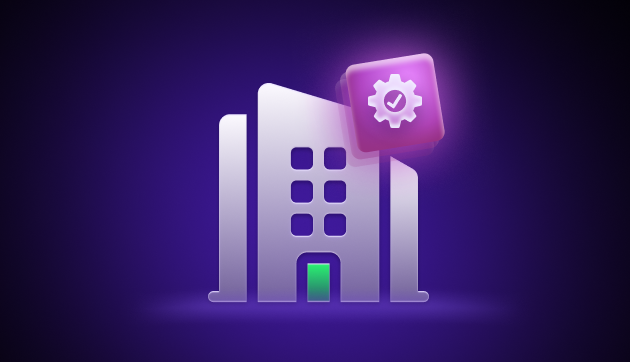
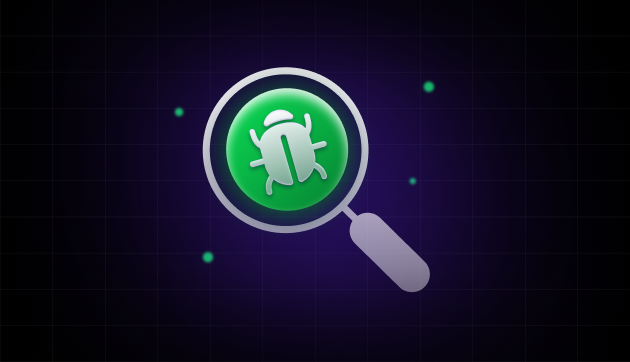
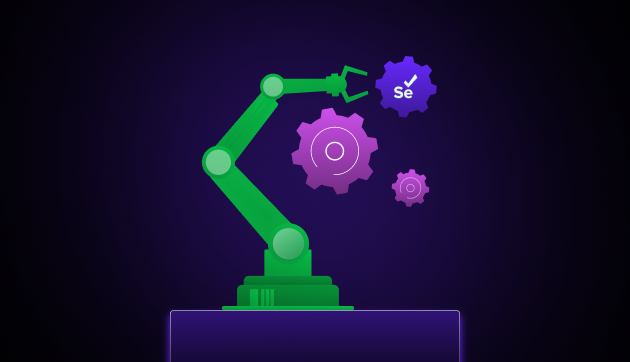
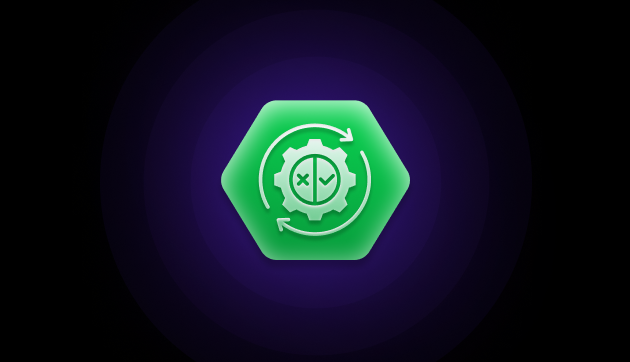

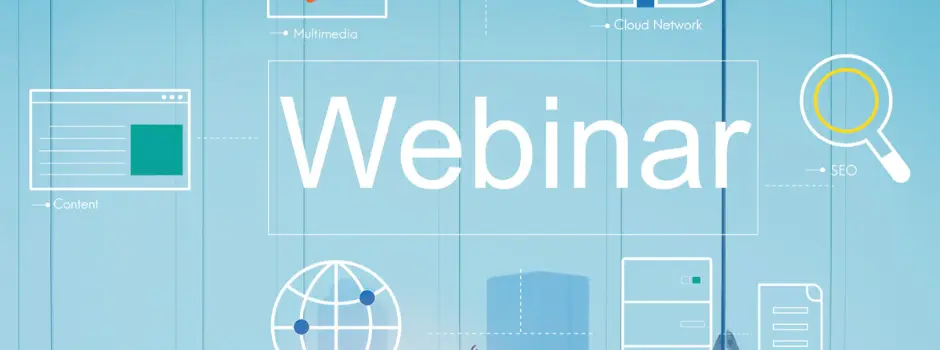



Did you enjoy this article?